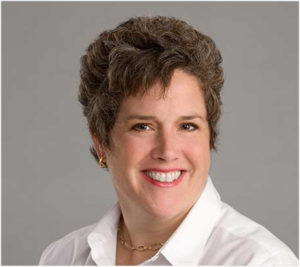As 2019 wraps up, many in the insurance industry are likely well into planning for the next year.
But what about planning for the next decade?
While it can be difficult to predict what’s ahead in 10 years, industry professionals speaking with Insurance Journal at a September roundtable offered their perspectives on what changes they anticipate for the insurance industry by 2030.
“I think being change agile is going to be a critical skill set for a long time,” said John Mina, president of Risk Strategies Co. “I don’t think the pace of change is likely to slow anytime soon. If anything, it’s more than likely to accelerate.”
“What we see in our business today is not going to exist in 10 years or even five,” said Trudi Barton, vice president of Commercial Lines for EPIC Insurance Brokers & Consultants.
Dan Epstein, CEO of ReSource Pro, added that as technology and processes change, the nature of risk is transforming as well.
“As we measure [risk] in different ways and in real time, it allows us to move from reacting to losses to preventing losses, and how that changes the industry I think will be pretty profound,” he said.

The roundtable was held by ReSource Pro, an insurance operations and service company, at its offices in Manhattan. The panelists were selected by ReSource Pro to discuss how technology is rapidly accelerating the pace of change in insurance, and the benefits and challenges this could bring.
Epstein said he believes the way that risk is measured and handled will reinvent what every organization is doing, whether this results in more loss prevention services cropping up alongside services that aid in post-claim recovery, or in a proliferation of devices that can be wired throughout homes and cars to help individuals track their own risks.
While it may seem daunting to think of how risks could change in the next 10 years, Mina added that how the insurance industry thinks about risk typically follows a predictable timeline.
“From the insurance perspective, you have technological change, you have regulatory oversight, and then you have insurance solutions and risk management,” he said. “It usually happens in that order.”
He pointed to drone use as one example. While drones have been used in a commercial sense for roughly 20 years, their use became much more widespread once the technology improved, making drones cheaper and more available. That’s when the Federal Aviation Administration stepped in with regulatory oversight, and at the same time, the insurance industry began creating products for insuring drones and educational resources to teach drone users about risk management strategies, he explained.

“You can look at the timeline and how quickly the insurance industry responded to that change, but it wasn’t until regulatory oversight stepped in and said, ‘We’re going to hold somebody responsible if something goes wrong,'” he said, adding that keeping a close eye on new technologies can serve as an important framework for assessing emerging risks.
“As we think about the risks likely to come, watch this space on the tech front first,” he said. “We have to always be focused on what’s going on over there, so we can start thinking about the products and services that are, or should be, in the works.”
Indeed, Barton agreed that most of the change in the insurance industry over the next decade will likely be driven by technology.
“[Technology] will be the driving force for how agencies communicate with and effectively serve their clients,” she said. “It’s being fueled by the fact that people increasingly want and expect real time information and data, and if we don’t execute on this as an industry, we will have missed a significant opportunity, which is totally unacceptable.”
Mina said he believes the insurance industry is already behind in harnessing what’s available in terms of technology.
“There’s too much work that we could already do just to improve the current technologies in the industry,” he said.
With this in mind, Mina thinks a revolution in the technology space is on tap for the insurance industry in the next 10 years because current software technologies are not fit to meet the industry’s growing needs.
“I read a statistic that said 75% of IT spending in the insurance industry is on maintaining legacy systems,” Epstein added. “That’s a difficult rock to climb out from underneath.”
In addition to replacing legacy systems, Mina said, the industry must find ways for its current workforce to rise to technology challenge as well.

“The day when someone could be a tech immigrant and be successful in the industry is starting to fade,” he explained. “It’s moving to an industry that’s relying on tech natives who don’t have these gaps in ability to work with these disparate systems and processes, so it’s going to give way to those who are born with technology and are very comfortable with it.”
Indeed, traditional insurers are already feeling more pressure to implement processes where clients can immediately receive information, as clients increasingly seek a real-time, rapid response, Barton said.
“I think that you’ll see some [insurers] that are structurally more in a position to be nimble, and others who aren’t,” Epstein added. “You’ll probably see winners and losers flow from that.”
However, in the search for more immediacy, panelists emphasized that the insurance industry shouldn’t expect automation to replace every aspect of the insurance industry any time soon. After all, participants agreed, one of the most important aspects of insurance is that it’s a relationship business.
“If these are emotional decisions people are making because of what they’re protecting, then I think there’s a human element that’s going to continue to be important,” Epstein said.
In order to capture the immediacy clients increasingly expect, Mina stated it’s likely that automation will continue to be used to improve processes around lower value tasks.
“I don’t see it replacing human interaction, but I do see more and more routine tasks in the industry that have been people’s jobs for years eventually fading away and allowing those employees to spend more time doing high value tasks,” Mina said.
Although new technologies and risks could pop up for the insurance industry in the next 10 years, Epstein added there is still time for insurers that feel behind to get up to speed.
“While it’s very easy to say there could be these massive, profound transformations, in the next five-to-10 years, I think the changes are going to be very much more incremental,” he said.
As the industry continues to look not only to the next year, but also to the next decade, focusing on relationships and communication will be key to staying on top of any changes that come along, according to Mina.
“Irrespective of our role in the industry, we have to stay engaged and need to make sure we’re all communicating,” he said. “I think as long as we stay engaged, we’ll continue to be prepared.”
Topics Trends Legislation InsurTech Tech Market
Was this article valuable?
Here are more articles you may enjoy.



 Global Tech Outage Disrupts Industries, Highlights Online Risks
Global Tech Outage Disrupts Industries, Highlights Online Risks  With American Mobile Cancellations, Florida Mobile Home Market Has ‘Fallen Apart’
With American Mobile Cancellations, Florida Mobile Home Market Has ‘Fallen Apart’  Allstate Reports Second Quarter Pretax Catastrophe Losses of $2.1B
Allstate Reports Second Quarter Pretax Catastrophe Losses of $2.1B  Project 2025 Plan to End NFIP Welcomed by Some, Rejected by Others in Insurance
Project 2025 Plan to End NFIP Welcomed by Some, Rejected by Others in Insurance 


